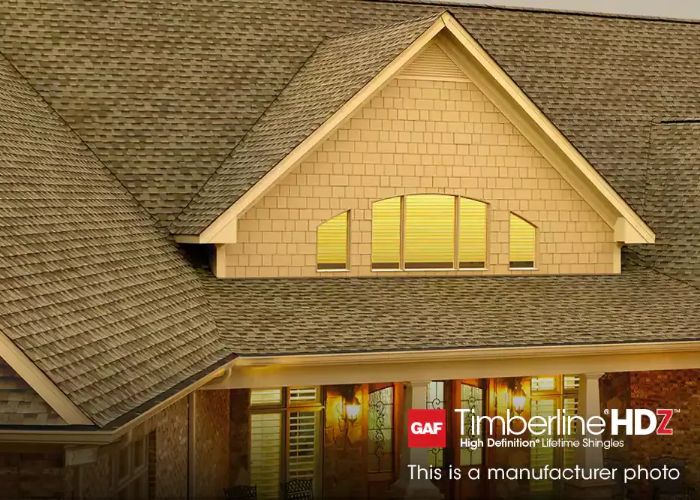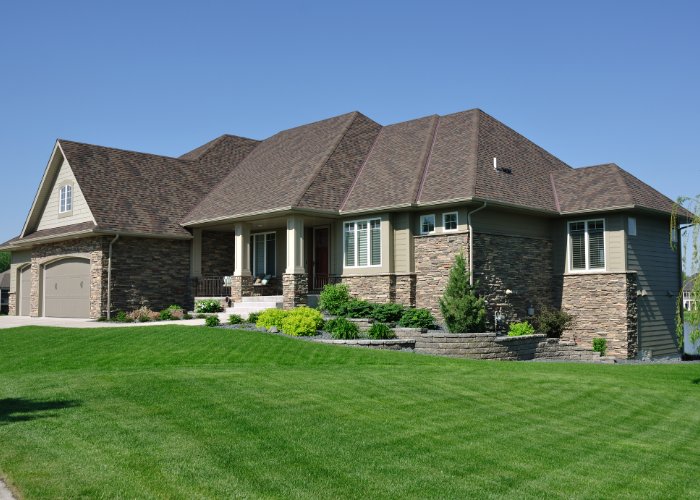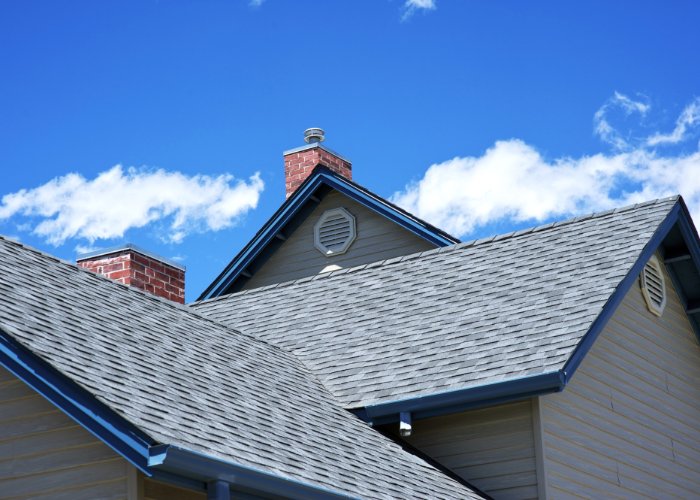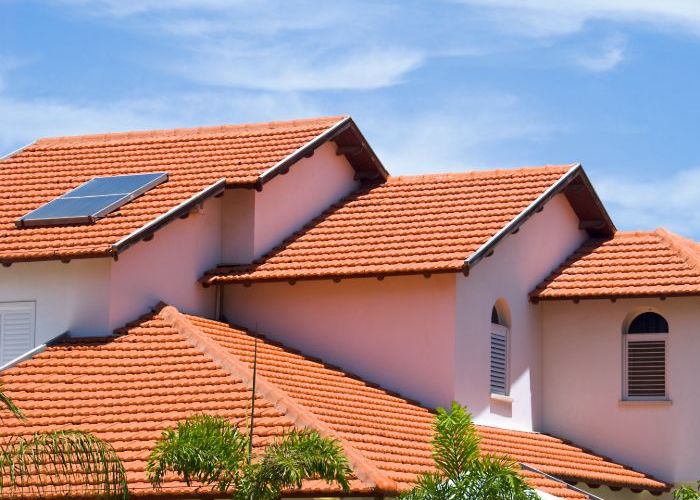Headquarters: 535 Pine Street, Central Falls, RI 02863
Call us: 401-274-0111

Fascia board, sometimes called fasciation or fascia, is an important architectural feature of many homes.
So, what is the purpose of fascia board? It serves several key purposes relating to the structure and appearance of a home. The main purpose of the fascia board is to provide a decorative, finished edge to a roofline while also functionally stabilizing rafter ends, anchoring gutters, and enclosing the eaves.
In this article, we will explore what fascia board is and its main functions.
Fascia board refers to a trim board that runs horizontally along the edge of a roof type and material. It caps the ends of roof rafters and often overhangs the exterior walls of a house. Fascia is typically made of wood, metal, or composite materials.
The main role of a fascia board is to stabilize the rafter ends and anchor the gutters while also providing a decorative covering. Fascia also gives the roofline a finished look. Without it, the look of a roofline would be unfinished with exposed rafter tails.

One of the main reasons fascia board is used is for aesthetic purposes. It gives the roofline a clean, finished look. The fascia helps conceal the look of rough rafter ends and allows the roofline to be painted or stained to match the color scheme of the home.
Fascia boards can be simple 1x4 or 1x6 wood boards. Or it can be more elaborate with added trim and molding details. The fascia is often the only decorative feature on the exterior of a roof. So, the style and details of the fascia board can dramatically impact the curb appeal of a home.
Another key function of fascia boards is to provide an anchoring point for gutters. The bottom edge of roof gutters attaches securely to the fascia board. This allows the gutters to collect rainwater runoff from the roof and channel it safely away from the home’s foundation.
Without fascia board, gutters would have no solid mounting surface. Gutters need to attach very securely to prevent sagging, leaking, and detachment. Fascia provides an ideal long, sturdy mounting surface for the entire perimeter of the roofline.
On many homes, the fascia board serves as the finished exterior edge of the roof sheathing or decking. Shingles are only installed up to the fascia board. The fascia covers the exposed edge of the sheathing material.
This provides a couple benefits. First, it encloses and protects the edge of the roof sheathing from water damage. It also gives the roof edge a clean, finished appearance. The shadow line of the fascia board delineates the roofing material from the rest of the home’s exterior.
Fascia board helps stabilize and strengthen the ends of rafters where they overhang the walls. The rafter ends intersect the fascia board, which ties them together structurally. The fascia helps prevent rafters from twisting or spreading, which could compromise the roof structure.
On homes with roof overhangs, the rafter ends beyond the walls are cantilevered and need additional support. Properly installed fascia board provides stabilization for the rafter tails. It also allows the rafter ends to be securely fastened.
For homes with open eaves, fascia board is one side of an enclosure that finishes the look of the eave while allowing ventilation. The fascia board runs horizontally, while vertical trim boards close off the eave ends.
This creates a soffit - an enclosed channel that allows airflow to ventilate the underside of the roof. The fascia and soffit framework provide a clean finish to what would otherwise be an open, unfinished roof overhang.
In addition to gutters, fascia board provides an attachment surface for soffits. Soffits are horizontal panels installed underneath roof overhangs. Like gutters, soffits need a solid mounting surface. The fascia board provides a sturdy linear surface for attaching the soffit panels.
On many homes, soffits are an integrated system with the fascia board. The fascia and soffits combine to enclose the eaves and provide ventilation. Many prefabricated soffit panels are designed to interlock with corresponding fascia boards.

Properly installed fascia board provides many benefits:
Conversely, fascia that is poorly installed or maintained can detract from the home's aesthetics and lead to structural issues.

In summary, fascia board serves a variety of important roles related to both form and function. Aesthetically, it gives a house a more attractive, complete look. Structurally, it stabilizes rafters, anchors gutters, and protects roof sheathing. It also allows for ventilation in the eaves. While largely decorative, fascia board is an integral architectural feature for enhancing the design and durability of a house.
About United Better Homes
United Better Homes is your premier contractor for roofing, solar panels, windows, and siding in Rhode Island. With over 20 years of experience, their qualified team of installers provides top-quality exterior home improvement services designed to enhance your home's comfort, efficiency, and curb appeal. For reliable home improvements and repairs, trust the knowledgeable professionals at United Better Homes by calling 401-274-0111 today.
What goes over fascia board?
The main items that go over fascia board are gutters and soffits. Fascia board provides an ideal mounting surface for securely attaching gutters along a roof's edge to collect rainwater drainage, as well as soffit panels under the eaves to enclose and ventilate the roof overhang.
How do I know if my fascia board is bad?
Signs that your fascia board needs repair or replacement include rotting or deteriorating wood, peeling paint, warped or buckled boards, loose areas, and water damage. You may also suspect fascia problems if you notice sagging gutters, leaking areas on the roof edge, or gaps that allow pests into the eaves.
Can you live without fascia?
While it is possible to live without fascia board, it is not recommended for most homes. Removing fascia board would leave the rafter tails and roof edge exposed, giving the roofline an unfinished, unprotected look. The lack of fascia would also mean gutters would have no solid mounting surface, so they could not be properly installed. Finally, the absence of fascia board would allow the rafter ends and roof sheathing to be more vulnerable to damage. In most cases, fascia serves important functional and aesthetic roles, so it is better to have it than to omit it entirely.
How important is fascia on a house?
Fascia is a very important architectural feature for several reasons. Fascia gives the roofline a clean, finished look and enhances the home's curb appeal. It also serves the critical function of stabilizing rafter ends to strengthen the roof structure. Additionally, fascia provides an essential mounting surface for anchoring gutters and channeling water away from the home. Finally, proper fascia installation protects the edge of the roof sheathing and allows for ventilation to prevent moisture issues. In summary, fascia is much more than decoration - it plays integral roles in the performance and durability of the roof system.